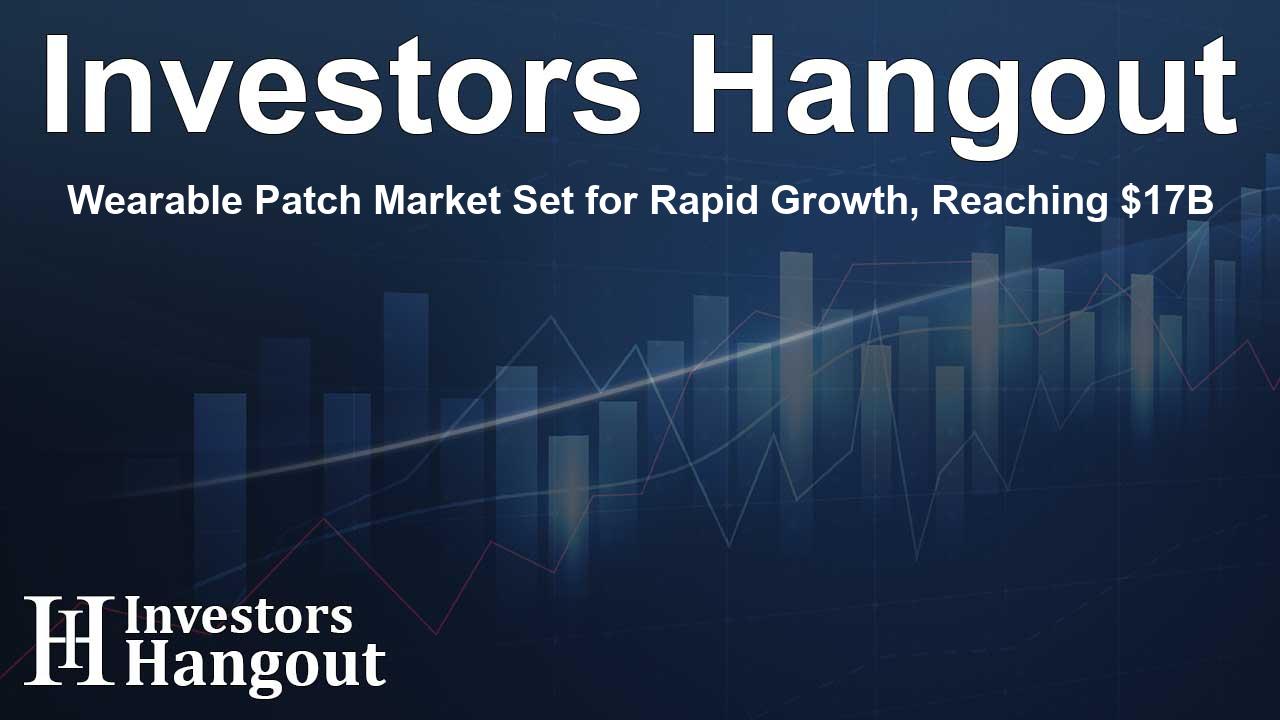Wearable Patch Market Set for Rapid Growth, Reaching $17B

Understanding the Growth of the Wearable Patch Market
The wearable patch market is on an impressive trajectory, projected to reach a value of USD 17.09 billion by the end of the forecast period. This growth equates to a robust compound annual growth rate (CAGR) of 7.9% from 2024 to 2031. This expansion can largely be attributed to technological advancements that are making wearable patches more effective and accessible.
Key Driving Forces Behind Market Expansion
Several factors are propelling the growth of the wearable patch market. First and foremost, the increasing focus on preventive healthcare is reshaping how individuals engage with their health management. People are seeking ways to monitor their conditions remotely, driving a demand for user-friendly and efficient healthcare solutions. Furthermore, the rise of home healthcare services is enabling consumers to leverage innovative technologies for personal health assessments.
Technological Advancements
Ongoing advancements in sensor technology have greatly enhanced the capabilities of wearable patches. These patches now offer real-time monitoring of various health metrics, which is invaluable for both patients and healthcare professionals. The integration of artificial intelligence into these products further improves the ability to analyze health data and generate actionable insights.
Popularity in the Sports and Fitness Sectors
As more people take an interest in fitness and outdoor activities, the wearable patch market is benefitting greatly. These devices allow both amateurs and professional athletes to monitor their physical performance and recovery metrics seamlessly, contributing to their growing popularity in this sector.
Market Segmentation and Insights
In the wearable patch market, revenue is projected to be USD 9.30 billion in 2023, with expectations to reach USD 17.09 billion by 2031. The segments covered in this analysis include type, technology, application, and end use, offering insights into various consumer preferences.
Focus on Blood Glucose Monitoring
Among the segments, blood glucose monitoring patches are gaining traction due to the rising prevalence of diabetes. These patches not only provide a non-invasive method for monitoring blood sugar levels but also appeal to users seeking ease of use. The increasing incidence of diabetes globally is expected to significantly contribute to this segment's growth.
Regional Market Insights
North America stands out as a major player in the wearable patch market, largely due to high consumer awareness and spending capabilities. This region benefits from a well-established technological infrastructure and the introduction of innovative products that cater to the needs of health-conscious consumers. The United States remains a significant market for wearable patch providers.
Current Challenges
Despite the promising growth outlook, the wearable patch market faces challenges that could inhibit its expansion. For instance, data privacy and security concerns are paramount among consumers. Additionally, stringent regulations can cause delays in product development and market entry, affecting sales opportunities.
Key Players in the Market
Several companies are leading the charge in the wearable patch market, shaping its future with their innovative approaches. Major players include Abbott Laboratories, Dexcom, Inc., Medtronic, and several others, all of which are pushing boundaries in technology and healthcare applications.
The Future of Wearable Patches
The future of wearable patches seems bright, with continuous advancements expected to expand their market share. The integration of new technologies coupled with an increasing demand for remote health monitoring indicates that these devices will play a critical role in the healthcare landscape.
Frequently Asked Questions
What is driving the growth of the wearable patch market?
Technological advancements, increased consumer awareness, and the shifting preference towards preventive healthcare are key factors driving growth.
How will blood glucose monitoring patches impact the market?
Blood glucose monitoring patches are expected to significantly contribute to market revenues due to the rising incidence of diabetes.
Which region is leading the market?
North America is leading the market, supported by high consumer awareness and technological infrastructure.
What are the main challenges facing this market?
Data privacy and regulatory hurdles are significant challenges that could impact growth.
Who are the key players in the wearable patch market?
Major players include Abbott Laboratories, Dexcom, and Medtronic, among others, all innovating in the space.
About Investors Hangout
Investors Hangout is a leading online stock forum for financial discussion and learning, offering a wide range of free tools and resources. It draws in traders of all levels, who exchange market knowledge, investigate trading tactics, and keep an eye on industry developments in real time. Featuring financial articles, stock message boards, quotes, charts, company profiles, and live news updates. Through cooperative learning and a wealth of informational resources, it helps users from novices creating their first portfolios to experts honing their techniques. Join Investors Hangout today: https://investorshangout.com/
Disclaimer: The content of this article is solely for general informational purposes only; it does not represent legal, financial, or investment advice. Investors Hangout does not offer financial advice; the author is not a licensed financial advisor. Consult a qualified advisor before making any financial or investment decisions based on this article. The author's interpretation of publicly available data shapes the opinions presented here; as a result, they should not be taken as advice to purchase, sell, or hold any securities mentioned or any other investments. The author does not guarantee the accuracy, completeness, or timeliness of any material, providing it "as is." Information and market conditions may change; past performance is not indicative of future outcomes. If any of the material offered here is inaccurate, please contact us for corrections.